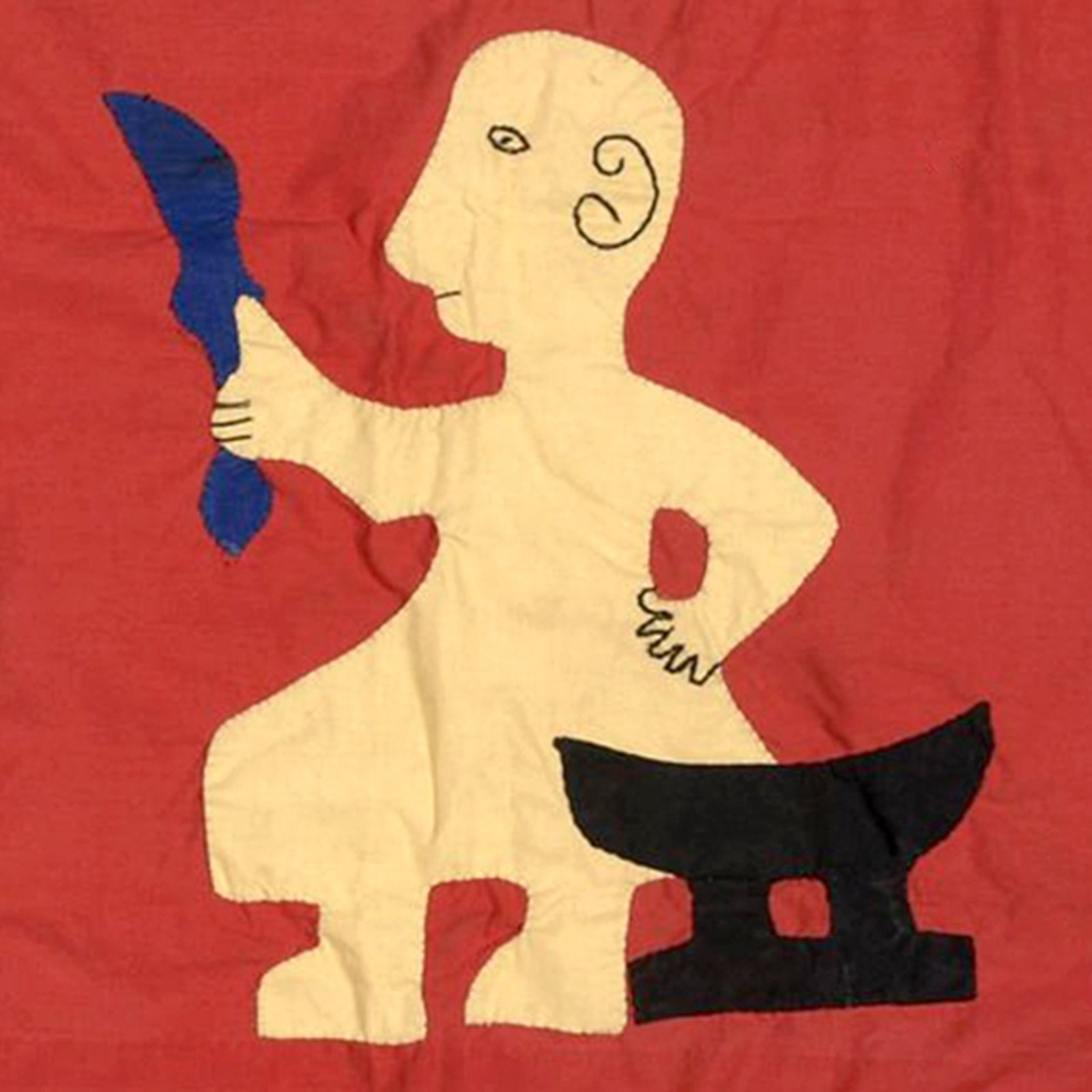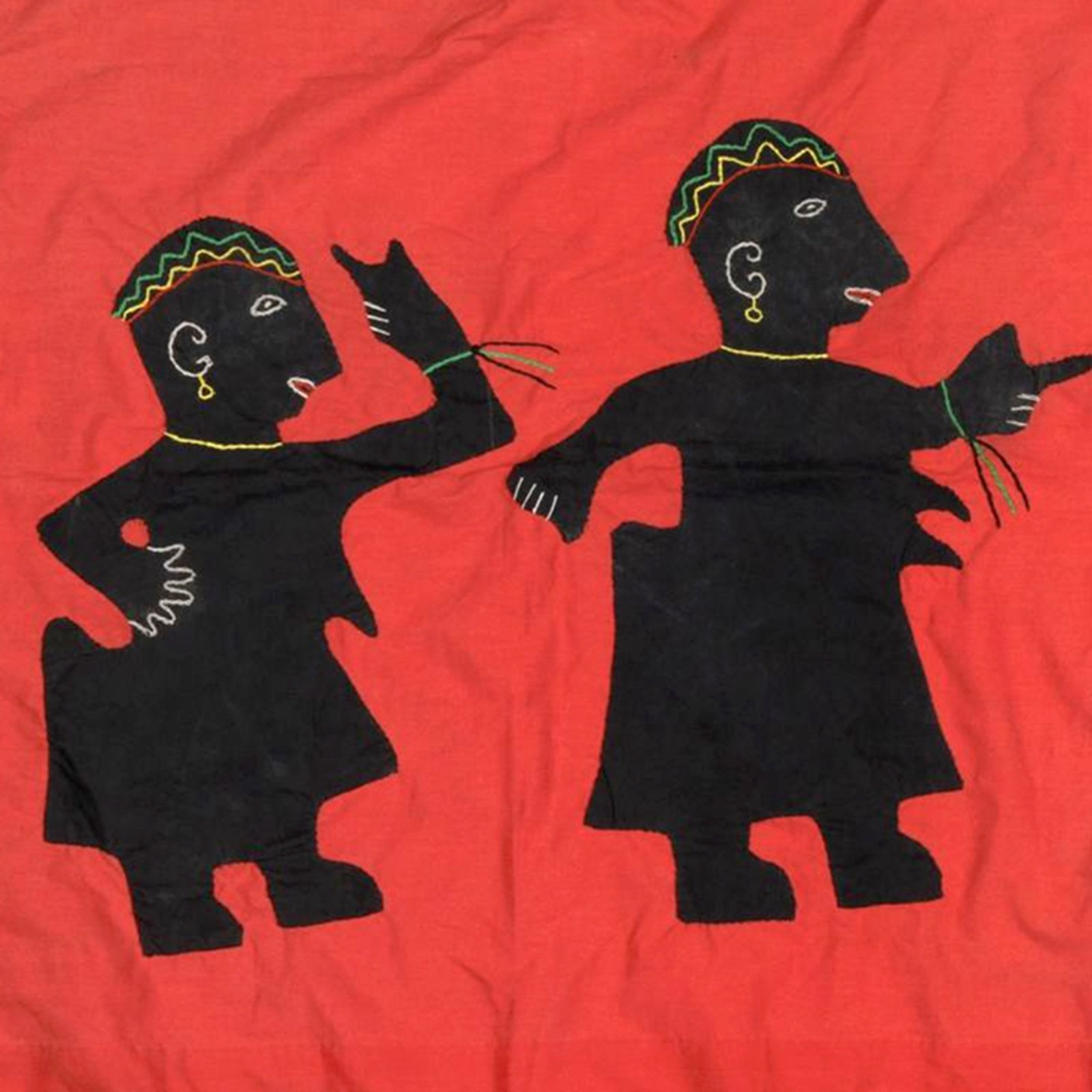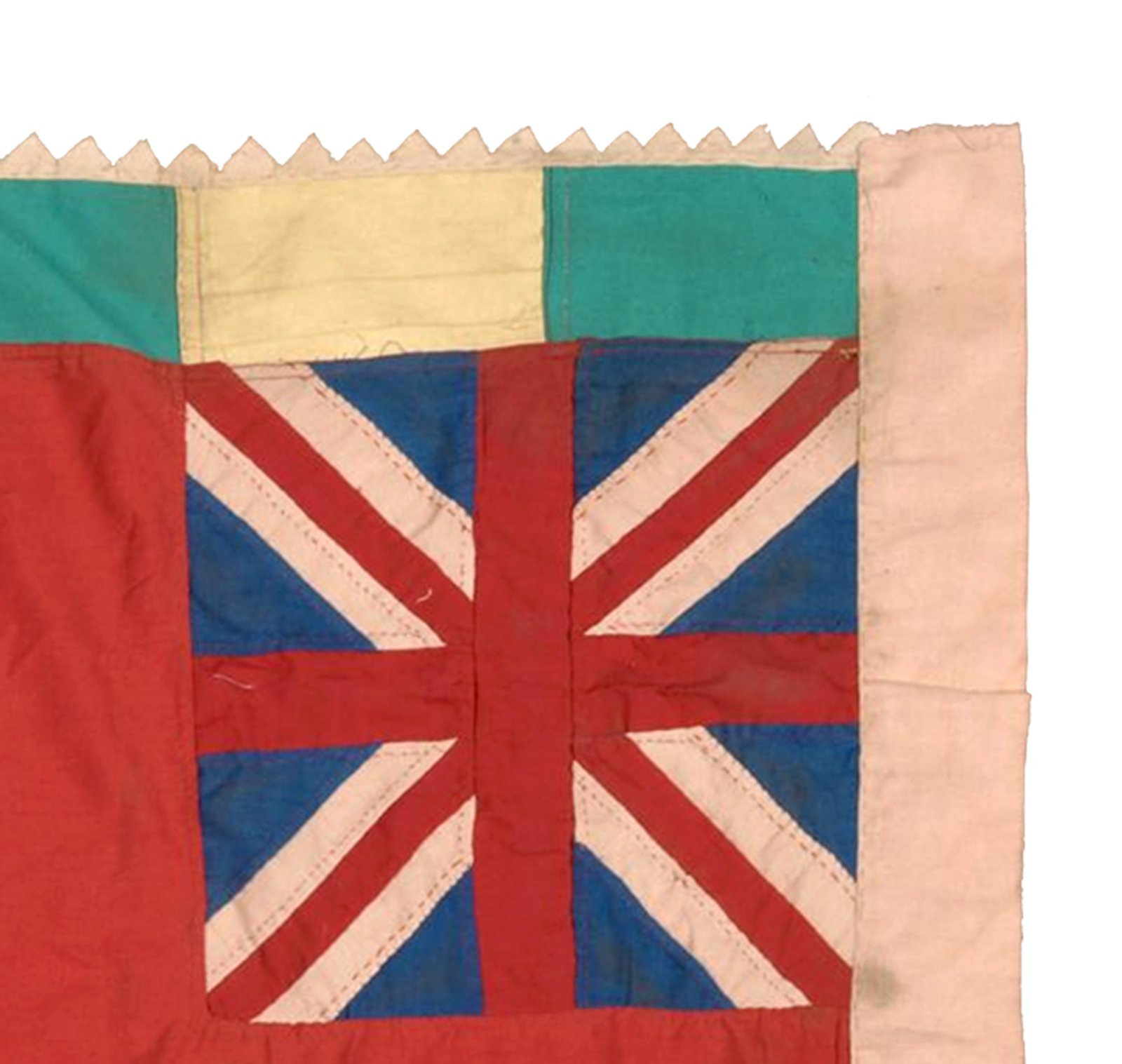Fante Asafo flag
Fante people
Ghana
Mid XX century
H. 87,5 cm - l. 132
In Fante, flags are called frank, and they are a key item of Asafo regalia. A man who wishes to join Asafo society designs a new flag and commissions its production from the local flag maker. The imagery of the flag challenges rival groups as it asserts the wealth and power of the company. The designs are a reflection of the importance of proverbs throughout the Akan culture. A company's flags are usually hung around the Posuban, a concrete shrine for each company that is colourfully decorated with bright figures and serves as a place for regalia and sacrifice. The flags are carried on a procession through the village, and are used at annual festivals, funerals for company members, and other occasions.
Fante people
Ghana
Mid XX century
H. 87,5 cm - l. 132
In Fante, flags are called frank, and they are a key item of Asafo regalia. A man who wishes to join Asafo society designs a new flag and commissions its production from the local flag maker. The imagery of the flag challenges rival groups as it asserts the wealth and power of the company. The designs are a reflection of the importance of proverbs throughout the Akan culture. A company's flags are usually hung around the Posuban, a concrete shrine for each company that is colourfully decorated with bright figures and serves as a place for regalia and sacrifice. The flags are carried on a procession through the village, and are used at annual festivals, funerals for company members, and other occasions.
Fante people
Ghana
Mid XX century
H. 87,5 cm - l. 132
In Fante, flags are called frank, and they are a key item of Asafo regalia. A man who wishes to join Asafo society designs a new flag and commissions its production from the local flag maker. The imagery of the flag challenges rival groups as it asserts the wealth and power of the company. The designs are a reflection of the importance of proverbs throughout the Akan culture. A company's flags are usually hung around the Posuban, a concrete shrine for each company that is colourfully decorated with bright figures and serves as a place for regalia and sacrifice. The flags are carried on a procession through the village, and are used at annual festivals, funerals for company members, and other occasions.






